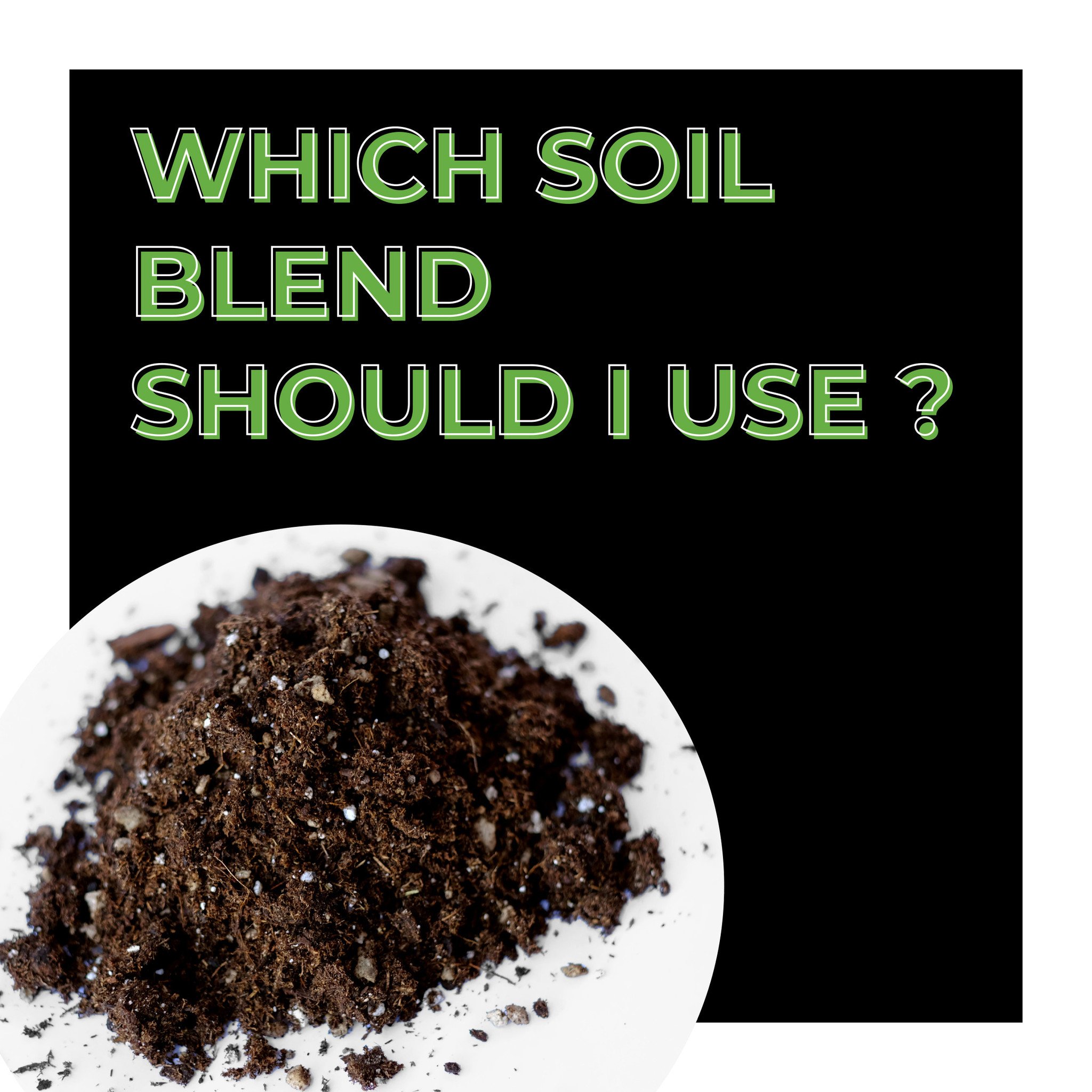Choosing the Right Potting Soil
- Posted on
- By The Biologic Team

Whether you grow inside, outside or in a greenhouse, choosing the right potting soil can determine the health and productivity of your crop. By evaluating factors such as water-holding capacity, amount of organic material and nutrient content, the informed grower can create an optimal environment for successful plant growth.
Potting Soil Basics
Potting soil is a carefully engineered mix of materials such as sphagnum peat moss, perlite, organic material, and fertilizers, designed to be ready to plant into directly out of the bag. While properly amended native or existing garden soil can provide an excellent environment for plant growth, potting soil blends have several advantages. Using a pre-made potting soil can insure balanced hydration and ideal nutrient availability throughout the plant lifecycle. Depending how it is managed, potting soil also has a reduced risk of pathogen development and disease spread.
A good potting soil blend will consist of a high-quality base material, a porous, lightweight ingredient for aeration, one or more sources of organic material, a natural fertilizer package and various, diverse sources of minerals and micronutrients.
Base Media
Sphagnum peat moss, fir bark and coco coir are some of the most commonly used base ingredients in potting soil mixes. Peat moss is a natural product harvested from bogs. The partially decomposed material ideal for holding moisture and providing drainage. Combining readily accessible pine bark with peat moss enhances soil aeration and water retention. Coco coir is a byproduct of the coconut industry and serves the same purpose as peat moss while being more environmentally friendly.
Aeration
Pumice, perlite and vermiculite are essential aeration materials used in many potting soil mixes to prevent soil compaction and allow for air movement. Pumice is a mined volcanic rock product that does not require secondary processing. It contains very few trace minerals and does not break down. Like pumice, perlite is a light-weight porous volcanic product. Perlite is mined and subsequently heated until it expands into round, white particles. Vermiculite is also naturally occurring and like perlite, is expanded with heat during processing. Vermiculite is renowned for its water-holding capabilities and is available in different sizes.
Organic Material
A high-quality compost or other organic material such as worm castings and/or humus is an essential component of a well-balanced potting soil blend. While a properly processed compost can add value to potting soil, the variability inherent in composting can add an undesirable degree of inconsistency to the finished product. Alternatively worm castings increase soil retention, improve soil aeration and trap valuable soil nutrients in potting soil blends. Humus is organic matter produced over many years of natural plant and animal decay. Adding humus to potting soil blends imparts the same structural benefits as worm castings while also providing fundamental nutrients. Worm castings and humus also feed beneficial soil microorganisms that produce, store and slowly release plant nutrients.
Nutrients
The addition of a naturally-derived fertilizer is common in organic potting soil blends. For organic farming it is important to seek out soil blends without synthetic fertilizers that have been certified organic by a reputable source such as the California Department of Food and Agriculture. The fertilizer should provide major macronutrients; nitrogen, phosphorous and potassium. In general nitrogen is essential for foliage growth and phosphorous for developing strong roots and flowering.
Choosing a Biologic Systems Potting Soil Blend
All of the Biologic Systems soil blends have a neutral pH with balanced macro and micronutrients and a good primary cation exchange capacity to insure optimal nutrient availability throughout the entire growing season. Biologic Systems soil blends are differentiated primarily by water holding capacity, aggregate, amount of organic material and nutrient content.
Gold Blend
Biologic Systems Gold Blend is high in organic material with both worm castings and humus. Our Gold Blend also contains a significant amount of sphagnum peat moss and uses screened pumice for aeration giving it the greatest water holding capacity of all our blends. Understanding this will provide optimal success for your application. The Gold Blend contains the highest percentage of our specially formulated 7-4-2 fertilizer, designed to supply adequate nutrients for roughly 4 weeks before requiring additional fertilizer. The Gold Blend is ideal for Living Soil Beds (indoor and greenhouse) and outdoor raised bed gardening.
Silver Blend
Biologic Systems Silver Blend contains perlite, fir bark and coco coir in addition to peat moss which allows it to drain and dry more quickly. The Silver Blend contains enough of the 7-4-2 fertilizer blend to supply 1-2 weeks’ worth of nutrients. This blend has been formulated for optimal drainage for farmers who like to irrigate often. The Silver Blend is a great choice for container gardening either indoors or in a greenhouse.
Bronze Blend
Biologic Systems Bronze Blend is a perlite-free mix with a base of age fir bark, peat moss, coco coir and pumice. The Bronze Blend is lightly amended with compost and our custom 7-4-2 fertilizer blend. This blend is a “foundation” blend designed for farmers who prefer to customize their own soil with their preferred amendments and fertilizers.
38 Special Germination Blend
The 38 Special Germination Blend was developed specifically for starting seeds. The 38 Special has a base of super fine peat moss and perlite plus just enough 7-4-2 fertilizer and micronutrient package to jump-start seedlings. This blend was formulated to pack a plug in a seedling tray for easy, stress free, transplanting. By allowing the root zone to stay intact, the 38 Special eliminates transplant shock leading to accelerated plant growth.
